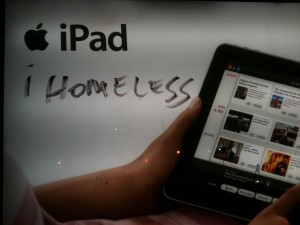Let the data revolution continue!
Client C:
- In retail. This is a good-sized account with a lot of diversity. Big dataset, long date range chosen (but not too long). The business is 99% online.
- AdWords-attributed revenue annually is north of $4 million and less than $50 million, and that’s all we’re saying. The point is that blanket inefficiencies can cost a lot in absolute terms.
- All metrics are watched closely by segment (keyword, ad, etc.); particularly revenue (ROAS) & CPA. We also weigh various attribution models in decision-making.
- The site functions well on both computers and mobile devices, and the checkout process is very smooth by industry standards.
- Average CPC is virtually identical tablets and computers; tablet CTR’s are slightly higher, but it depends on the product.
- About 13% of clicks are on tablets.
- In the aggregate, CPA and ROAS on tablets are only slightly worse than on computers, and they still hit our ROAS targets.
That doesn’t mean there isn’t a problem, though. The trick is in the fact that “aggregate” takes a lot of interesting and diverse behavior by product (ad group), and averages that behavior. It’s in the detail that you find the opportunities, of course. That’s pretty obvious to anyone who has ever bid on a keyword since 2001.
Here’s what you get when you dig in, ad group by ad group (for this account).
This account is a poster child for the general theory that “usually, tablets perform about the same as computers.” And in many cases, that performance is very good. In fact, as I run through a long list of ad groups by top volume spenders, I find only about 20-25% of the ad groups have deviations in tablet behavior sufficient to warrant a special bid for that ad group. The ratio of “we would bid down” to “we want to bid higher” is around 3:1. What’s more, the deviations in behavior seem to be for recognizable reasons. The poor performers tend to share certain characteristics that attract more casual, nonconverting clicks in the tablet environment specifically.
Long term, it’s clear that Google comes out *roughly even* if they simply allow power users to enter adgroup-specific tablet bid factors, similar to those we can currently control for smartphones.
In this particular account, “only” 20-25% of ad groups being bid too high or too low represents a lot of misallocated resources. It’s really not all that much work to set those bid factors, especially since, past the first 300-400 ad groups, you won’t see statistically significant volume for a long time, so you wouldn’t want to tinker with them.
Whether it is a best-case or worst-case scenario (this being best-case), I say either way, case closed.
As Avinash says: “All data in aggregate is ‘crap’.”

